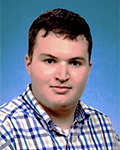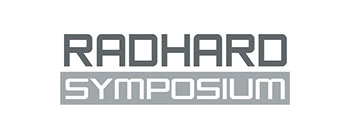Abstract

CubeSat mission “SpaceTeamSat1”: A live lab in space
Stefan Galavics, David Freismuth, Patrick Kappl, David Wagner, Raphael Behrle
TU Wien Space Team, Vienna, Austria
Abstract
The current advancement in space exploration has a significant influence on our society, particularly on the youth, who is greatly captivated by space topics also broadly visible in media. The key challenge is to provide young people opportunities to actively participate and incite interest in space related programs. Moreover, enabling such pathways allows them to pursue a career in the space and aeronautics field, whether it be in academia or industry. This is especially important since these subjects can appear unattainable to many students. To tackle this issue, educational initiatives such as AstroPi (offered by ESA) [1] and High School Aerospace Scholars (offered by NASA) [2] have been established to encourage and guide students towards these opportunities.
Nevertheless, the inhibition threshold for participation in engineering and science space projects is usually too high for pupils, as they often require an in-depth knowledge on certain topics, as e.g. advanced programming, electronics or mechanics skills and facilities. Moreover, in such initiatives, students often do not get support in technical manners. Therefore, the TU Wien Space Team provides a satellite platform for students with the 1U CubeSat "SpaceTeamSat1" (STS1) mission, which offers a hands-on introduction to the topic of space technology and its individual facets.
STS1 allows secondary school pupils between the age of 15 and 19 to operate their own code on a Raspberry Pi payload, acting as a live lab in space. The payload is equipped with a diverse set of sensors and cameras, facilitating a wide range of experiments. For example, magnetometers can be accessed to evaluate Earth’s magnetic field or utilizing gyroscopes allows them to evaluate the rotation of the CubeSat itself. Another important aspect is the integration of a dosimeter fabricated by Seibersdorf Laboratories, which is also part of the sensor set accessible by the Raspberry Pi payload. Importantly, teachers can actively integrate these experiments into lessons. Moreover, a cooperation with ESERO Austria [3] further enhances the space education portfolio in Austria and shall encourage other university student associations operating in the field of space technology. This especially holds for providing and operating educational CubeSats, allowing society to participate and join space missions.
So far, the TU Wien Space Team is currently the only organization providing this kind of mission in Austria, promoting hands-on experiments on a CubeSat in space. This also includes close contact to schools and pupils for appropriate guidance in the scope of the mission, even including the assembly of their very own SatNOGS [4] ground station. Moreover, the expertise and technology generated during the STS1 mission will be open source. Hence, the experience and insights on the challenges gathered during the development of a spacecraft is shared with schools and students. This shall pave the way for more space-related lessons in schools as well as de-mystify space technology for young generations and opens paths to future space technologists and scientists.
References
| [1] | „astro-pi,“ Raspberry Pi Foundation UK, [Online]. Available: astro-pi.org. [Access on 21 February 2023]. |
| [2] | S. May, „NASA,“ National Aeronautics and Space Administration, 18 November 2022. [Online]. Available: www.nasa.gov/centers/johnson/stem/High_School_Aerospace_Scholars.html. [Access on 21 February 2023]. |
| [3] | „ars.electronica.art,“ ESERO Austria, [Online]. Available: ars.electronica.art/esero/de/. [Access on 21 February 2023]. |
| [4] | "SatNOGS," SatNOGS, [Online]. Available: satnogs.org. [Accessed on 22 February 2023] |
![[Translate to English:] [Translate to English:]](/fileadmin/uploads/intranet/events/radhard/2023/header-radhard2023.jpg)
